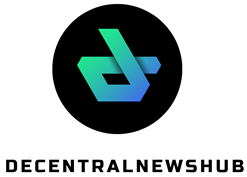OpenAI announced today that it is releasing a new family of artificial intelligence models optimized to excel at coding, as it ramps up efforts to fend off increasingly stiff competition from companies like Google and Anthropic. The models are available to developers through OpenAI’s application programming interface (API).
OpenAI is releasing three sizes of models: GPT 4.1, GPT 4.1 Mini, and GPT 4.1 Nano. Kevin Weil, chief product officer at OpenAI, said on a livestream that the new models are better than OpenAI’s most widely used model, GPT-4o, and better than its largest and most powerful model, GPT-4.5, in some ways.
GPT-4.1 scored 55 percent on SWE-Bench, a widely used benchmark for gauging the prowess of coding models. The score is several percentage points above that of other OpenAI models. The new models are “great at coding, they’re great at complex instruction following, they’re fantastic for building agents,” Weil said.
The capacity for AI models to write and edit code has improved significantly in recent months, enabling more automated ways of prototyping software, and improving the abilities of so-called AI agents. In the past few months, rivals like Anthropic and Google have both introduced models that are especially good at writing code.
The arrival of GPT-4.1 has been widely rumored in recent weeks. OpenAI apparently tested the model on some popular leaderboards under the pseudonym Alpha Quasar, sources say. Some users of the “stealth” model reported impressive coding abilities. “Quasar fixed all the open issues I had with other code genarated [sic] via llms’s which was incomplete,” one person wrote on Reddit.
“Developers care a lot about coding and we’ve been improving our model’s ability to write functional code,” Michelle Pokrass, who works on post-training at OpenAI, said during the Monday livestream. “We’ve been working on making it follow different formats and better explore repos, run unit tests and write code that compiles.”
Over the past couple of years, OpenAI has parlayed feverish interest in ChatGPT, a remarkable chatbot first unveiled in late 2022, into a growing business selling access to more advanced chatbots and AI models. In a TED interview last week, Altman said that OpenAI had 500 million weekly active users, and that usage was “growing very rapidly.”
OpenAI now offers a smorgasbord of different flavors of models with different capabilities and different pricing. The company’s largest and most powerful model, called GPT-4.5, was launched in February, though OpenAI called the launch a “research preview” because the product is still experimental.
The company also offers models called o1 and o3 that are capable of performing a simulated kind of reasoning, breaking a problem down into parts in order to solve it. These models also take longer to respond to queries and are more expensive for users.
ChatGPT’s success has inspired an army of imitators, and rival AI players have ramped up their investments in research in an effort to catch up to OpenAI in recent years. A report on the state of AI published by Stanford University this month found that models from Google and DeepSeek now have similar capabilities to models from OpenAI. It also showed a gaggle of other firms including Anthropic, Meta, and the French firm Mistral in close pursuit.
